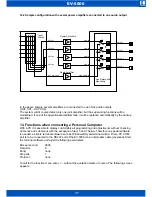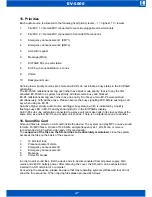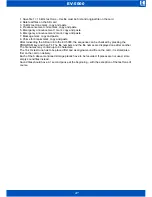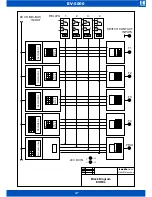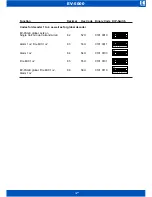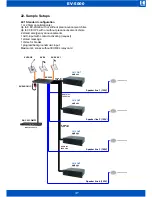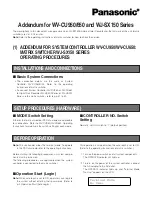
ic audio
EV-5000
EN
29
The device consists of the following functional units:
1. 4 decoder units, which accept commands from the 80-channel call station bus
4 DIP-switch blocks, which distribute the decoder outputs to the 4 relays
2. 5 DIP switch blocks, which handle the contact inputs also for EV-P4,
4x zones and 1x busy
3. 1 decoder for global commands, which control all 4 relays simultaneously
So there are 10 selectable switch functions, which can be allocated optional to each of the 4 relays.
Indeed one relay can be assigned to multiple switch functions, as well as one switch function can
control multiple relays at the same time.
21.1 Application of EV-REL for extending zones
Data coming from the 80-channel bus are fed to 4 decoders, consisting of an 8-pole + 4-pole DIP-
switch and an evaluation electronics. By the 8-pole DIP switches the binary address is defined, to
which each decoder will be sensitive to. The 4-pole DIP-switch distributes the decoders output to
the 4 relays. The following code table contains the binary codes for each available function –
D8...D5 most significant byte, D4...D1 least significant byte. So if a decoder should switch relays as
the message (MSG) is running, the following address is to be entered:
98H = 1001 1000 or
D8=1, D7=0, D6=0, D5=1, D4=1, D3=0, D2=0, D1=0
Thereby means
0 = DIP switch OFF and
1 = DIP switch ON.
The related 4-pole switch matrix will define the relays to be energised,
in the adjacent sample these are relays R1, R3 and R4.
As already explained, for inverse function of line relays control, the
not active lines
have to be switched. So in this example the message will only be heard in the
zone, which is connected to relay 2.
Attention!
The global decoder has to be set to address AAH as the EV-REL is used for extending the
number of zones in inverse programming mode – see following list of codes. In the inverse
mode the global decoder can no longer be used for global functions.
The inverse mode will cause all relays to be energised on all cards, as soon as a call key is
pressed on the EV-PAGE. Single decoders take priority over the global decoder, in that way that
relays for programmed speaker lines remain not energised and so signals will be heard on just
these lines.
Furthermore the PRIO - input of the contact switch matrix has to be connected to GND.
This will change the PRIO 4-DIP-switch block into
a relay selector switch for group call (group call
key on EV-PAGE). The DIP-switches R1 to R4
below PRIO determine relays, which switch after
pressing the group call key. Here too inverse
programming has to be performed. In the adjacent
sample the call will go to lines connected to relay 1
and relay 3.
Switch inputs T1 to T4 cannot be used in
inverse mode (address AAH set at global
decoder)!
Hence EV-P4 call stations cannot be used
together with EV-REL relay cards.
Contact switch matrix
D8 D7 D6 D5 D4 D3 D2 D1
ON
ON
R1 R2 R3 R4
ON
R1 R2 R3 R4
ON
R1 R2 R3 R4
ON
R1 R2 R3 R4
ON
R1 R2 R3 R4
ON
R1 R2 R3 R4
T1
T2
T3
T4
PRIO
T1
T2
T3
T4
PRIO
0V, GND
Wire link
for invers
mode





